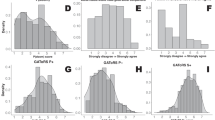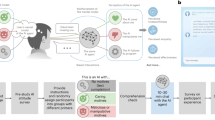Abstract
This study delves into the dynamics between user politeness and the intelligence level of conversational AI products, alongside their interaction methods. We focused on the evolving sophistication of AI, especially in large language models like GPT, and its influence on user behavior and perception. A notable finding is the significant correlation between AI intelligence and the frequency of user politeness. As AI progressively mimics human-like understanding and interaction, users tend to engage more politely, viewing these interactions as akin to communicating with a peer.
We also highlight the importance of interaction modes. While users generally show more politeness in text and voice dialogues compared to simpler interfaces, the anticipated superiority of voice dialogues in eliciting politeness over text was not observed, which suggests that the interaction format may be less impactful than the AI’s perceived intelligence.
Furthermore, our identify a positive link between user satisfaction and politeness, positing that politeness could act as an indirect indicator of user satisfaction with AI products. This method offers a less intrusive alternative for assessing AI effectiveness, diverging from direct metrics like task efficiency or subjective satisfaction.
Our research offers new insights into users’ polite behavior towards AI products. It reveals which product characteristics prompt users to exhibit polite behavior and highlights the significance of observing user politeness for AI product design.
Access this chapter
Tax calculation will be finalised at checkout
Purchases are for personal use only
Similar content being viewed by others

References
Group, FudanNlp. The Rise and Potential of Large Language Model Based Agents: A Survey
Ho, A., Hancock, J., Miner, A.: Psychological, relational, and emotional effects of self-disclosure after conversations with a chatbot. J. Commun., 712–733 (2018,8). http://dx.doi.org/10.1093/joc/jqy026
Deshpande, A., Rajpurohit, T., Narasimhan, K., Kalyan, A.: Anthropomorphization of AI: Opportunities and Risks. In: Proceedings of the Natural Legal Language Processing Workshop 2023 (2023). https://doi.org/10.18653/v1/2023.nllp-1.1
Salles, A., Evers, K., Farisco, M.: Anthropomorphism in AI. AJOB Neuroscience, 88–95 (2020,4). http://dx.doi.org/10.1080/21507740.2020.1740350
Li, M., Suh, A.: Machinelike or humanlike? a literature review of anthropomorphism in AI-enabled technology. In: Proceedings Of The Annual Hawaii International Conference On System Sciences, Proceedings Of The 54th Hawaii International Conference On System Sciences (2021,2). http://dx.doi.org/10.24251/hicss.2021.493
Yang, Y., Liu, Y., Lv, X., Ai, J., Li, Y.: Anthropomorphism and customers’ willingness to use artificial intelligence service agents. J. Hospitality Market. Manage., 1–23 (2022,1). http://dx.doi.org/10.1080/19368623.2021.1926037
Tschopp, M., Gieselmann, M., Sassenberg, K.: Servant by default? How humans perceive their relationship with conversational AI. Cyberpsychol. J. Psychosocial Res. Cyberspace 17(3) (2023). https://doi.org/10.5817/cp2023-3-9
Bower, A.H., Steyvers, M.: Perceptions of AI engaging in human expression. Sci. Rep. 11(1) (2021). https://doi.org/10.1038/s41598-021-00426-z
Zimmerman, A., Janhonen, J., Beer, E.: Human/AI relationships: challenges, downsides, and impacts on human/human relationships. AI and Ethics (2023). https://doi.org/10.1007/s43681-023-00348-8
Kim, T., Maimone, F., Pattit, K., Sison, A., Teehankee, B.: Master and slave: the dialectic of human-artificial intelligence engagement. Humanistic Manage. J. 6(3), 355–371 (2021). https://doi.org/10.1007/s41463-021-00118-w
Pataranutaporn, P., Liu, R., Finn, E., Maes, P.: Influencing human-AI interaction by priming beliefs about AI can increase perceived trustworthiness, empathy and effectiveness. Nature Mach. Intell. 5(10), 1076–1086 (2023). https://doi.org/10.1038/s42256-023-00720-7
Rhee, C., Choi, J.: Effects of personalization and social role in voice shopping: an experimental study on product recommendation by a conversational voice agent. Comput. Hum. Behav. 109, 106359 (2020). https://doi.org/10.1016/j.chb.2020.106359
Ahn, J., Kim, J., Sung, Y.: The effect of gender stereotypes on artificial intelligence recommendations. J. Bus. Res. 141, 50–59 (2022). https://doi.org/10.1016/j.jbusres.2021.12.007
Youn, K., Cho, M.: Business types matter: new insights into the effects of anthropomorphic cues in AI chatbots. J. Serv. Market. 37(8), 1032–1045 (2023). https://doi.org/10.1108/jsm-04-2022-0126
Roy, R., Naidoo, V.: Enhancing chatbot effectiveness: the role of anthropomorphic conversational styles and time orientation. J. Bus. Res., 23–34 (2021). https://doi.org/10.1016/j.jbusres.2020.12.051
Li, M., Suh, A.: Machinelike or humanlike? a literature review of anthropomorphism in ai-enabled technology. In: Proceedings of the Annual Hawaii International Conference on System Sciences, Proceedings of the 54th Hawaii International Conference on System Sciences. Presented at the Hawaii International Conference on System Sciences (2021). https://doi.org/10.24251/hicss.2021.493
Kim, A., Cho, M., Ahn, J., Sung, Y.: Effects of gender and relationship type on the response to artificial intelligence. Cyberpsychol. Behav. Soc. Networking, 249–253 (2019). https://doi.org/10.1089/cyber.2018.0581
Niu, D., Terken, J., Eggen, B.: Anthropomorphizing information to enhance trust in autonomous vehicles. Hum. Factors Ergon. Manuf. Serv. Ind., 352–359 (2018). https://doi.org/10.1002/hfm.20745
Waytz, A., Heafner, J., Epley, N.: The mind in the machine: anthropomorphism increases trust in an autonomous vehicle. J. Exp. Soc. Psychol., 113–117 (2014). https://doi.org/10.1016/j.jesp.2014.01.005
Mori, M., MacDorman, K., Kageki, N.: The Uncanny Valley [From the Field]. IEEE Robot. Autom. Mag., 98–100 (2012). https://doi.org/10.1109/mra.2012.2192811
Du, S.: The Impact of Artificial Intelligence on Interaction Design (2021)
Wienrich, C., Latoschik, M.: Extended Reality: Prospects for Human-AI Interaction (2021)
Wenskovitch, J., North, C.: Interactive artificial intelligence: designing for the “two black boxes” problem. Computer. 53, 29–39 (2020)
Lemon, O.: Multiagent Communication with Natural Language (2022)
Jonell, P., Kucherenko, S., Henter, G., Beskow, J.: A Probabilistic Approach to Generating Perceived Facial Gestures in Dialogue Agents for Enhanced Natural Face-to-Face Interaction with AI (2020)
Byun, J., Kim, H., Lee, S.: Multimodal Emotion Recognition Using Speech Features and Text Embedding for Intelligent Personal Assistants and Chatbots (2021)
Šumak, B., Brdnik, A., Pusnik, M.: Advanced AI Methods and Sensor Technologies in Human-Machine Intelligent Interactions (2021)
Ghajargar, E.: Forms as Explanation: A Modality for Explainable AI (2022)
Alam, L., Hoque, M.: Designing an Intelligent Agent for Human-Computer Interaction (2015)
Angga, A., Fachri, B., Elevanita, A., Suryadi, K., Agushinta, R.: Design of Chatbot with Avatar and Voice Interface for Natural Interaction (2015)
Acknowledgement
This work was partly supported by Shenzhen Key Laboratory of next generation interactive media innovative technology (No: ZDSYS20210623092001004)
Author information
Authors and Affiliations
Corresponding author
Editor information
Editors and Affiliations
Rights and permissions
Copyright information
© 2024 The Author(s), under exclusive license to Springer Nature Switzerland AG
About this paper
Cite this paper
Yuan, Y., Su, M., Li, X. (2024). What Makes People Say Thanks to AI. In: Degen, H., Ntoa, S. (eds) Artificial Intelligence in HCI. HCII 2024. Lecture Notes in Computer Science(), vol 14734. Springer, Cham. https://doi.org/10.1007/978-3-031-60606-9_9
Download citation
DOI: https://doi.org/10.1007/978-3-031-60606-9_9
Published:
Publisher Name: Springer, Cham
Print ISBN: 978-3-031-60605-2
Online ISBN: 978-3-031-60606-9
eBook Packages: Computer ScienceComputer Science (R0)



